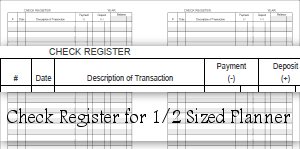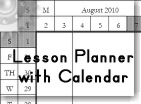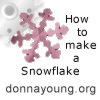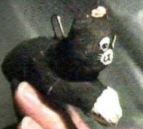 Exploring Creation with General Science
Exploring Creation with General Science
Published by Apologia Educational Ministries and written by By Dr. Jay L. Wile
Exploring Creation with General Science is best used by 7th grade students but can be used by 8th grade students. Personally, I do not recommend this book for 6th grade or under. The scope of the book is broad as it covers a great deal of science areas including scientific method, simple machines, geology, human anatomy and physiology to name a few.
Donna Young's Resources for Exploring Creation with General Science
Because we used Exploring Creation with General Science, 1st Edition, I have two different lessons plans for that particular edition. Each of the two lesson plans has a different pace. To see the lesson plans that I made for Exploring Creation with General Science, 1st Edition go to this link: 1st Edition. Lesson Plans. Be sure to look at the bookmarks for "Lesson Plans #2"
2nd Edition resources are on this page: Resources for Apologia's Exploring Creation With General Science 2nd Edition.
If you are running a co-op, the co-op schedules/plans can be found at Co-op - ECw General Science.
If you would like to read Marty's articles about her classes using Exploring Creation with General Science, then go to Marty's Blog - Sahm I Am ![]() .
.
For either edition of Exploring Creation with General Science I have made additional resources and I have also offered my opinion about a few things. You are more than welcome to ignore my opinions. The additional resources are two optional worksheets and one study aid. The study aid should help the student retain the information about the scientists in module one. The worksheets that I made are diagrams that the student can label. One is for module 11- The Skeleton and the other one is for Module 13- The Digestive System. The study aid and the worksheets can be printed from this page Worksheets and Study Aids.
The other articles that I wrote for Exploring Creation with General Science - any edition, are My Comments and my opinions on the lab book and grading at Lab Book & Grades. At My Comments you can read about spreading out Module One, my thoughts on taking two years for this course, my red cabbage tip and one or two other things. At Lab Book & Grades I encourage you in a rather bossy way to teach your child how to create a lab book. I even offer a possible sample lab report rubric, which you can completely ignore. The sample rubric concentrates on logical sequence, completeness, and neatness. You can either choose to use the rubric and grading table or consider my sample lab report rubric and grading table a "lesson in grading from one homeschooler to another homeschooler" and then design your own rubric.
Exploring Creation with General Science, 1st Edition 1st Edition
Exploring Creation with General Science, 1st Edition, 2 Volumes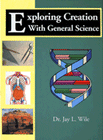
This is the book that we used. If you find it second hand, you will need to buy the two volume set. The two volume set includes the textbook and the test and solutions book.
"Amazing," "a blessing," and "totally cool" are only a few ways parents and students describe this introductory science curriculum. Combining a creationist viewpoint with clear explanations and fun experiments, Dr. Wile presents 16 modules covering simple machines, paleontology, biology, human anatomy, and other topics. All labs use household items. The course is even backed by an Internet support system! Includes a 107-page test/solutions book. 434 pages, hardcover. For 7th grade.
At CBD
Exploring Creation with General Science, 2nd Edition, 2 Volumes
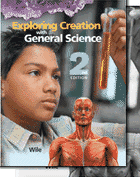
You will need to buy the two volume set and that is what I linked above. The two volume set includes the textbook and the test and solutions book. For 7th grade.
This second edition includes updates on relevant topics as well as stylistic changes. The primary function of the appendix (discovered in 2006) has now been included, as have higher-quality drawings and more colorful illustrations. Online resources for advanced students and a review appendix have also been included in this 2nd edition. This kit contains both the student textbook and answer key.
Important: Instructor, be certain to read "Teacher's Notes" in front of the Solutions and Tests book. Students and instructor should read the "Student's Notes" in front of the text book.


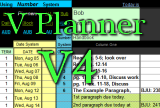 V Planner
V Planner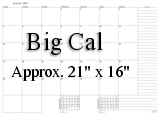 Big Cal
Big Cal